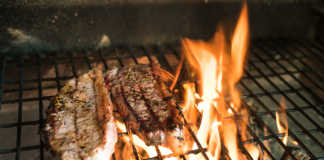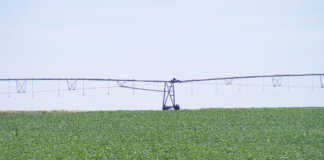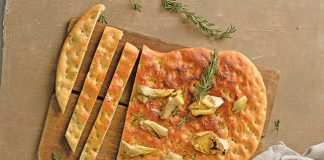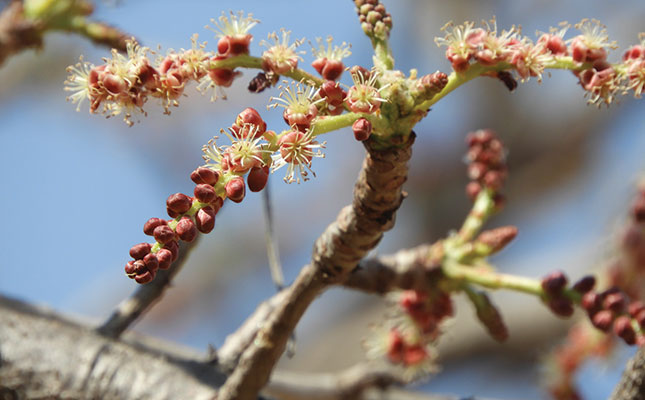
Photo: Magda du Toit
Ghaub farm, near Tsumeb in the northern part of Namibia, is the epitome of a mixed farming operation. Here, the Rust family run a game farm, raise cattle and grow vegetables and citrus. Moreover, they have recently begun capitalising on the fruit of the marula trees that grow wild on their land.
Martin Rust’s parents, Joachim and Caroline, bought Ghaub in 2016.
“At the time, our primary focus was ecotourism, but we’ve since expanded into agriculture. The idea is to produce as much as possible of the food we need for our tourism operation.
“Under the label Ghaub Farm Products, we started producing beef and game meat, milk, and eggs, as well as providing braai wood for our lodges. Our vegetable production began in 2019, and we’re now harvesting lettuce, spinach, tomatoes, beans and carrots on a regular basis for our lodges at Ghaub and Waterberg Wilderness Private Nature Reserve.
“We also planted citrus trees and are always investigating new things to add to our product line and our guests’ experiences,” explains Rust.
The indigenous marula tree (Sclerocarya birrea) is a botanical landmark on Ghaub. The high protein and vitamin C content of the fruit make the marula one of the most important indigenous fruit trees in Southern Africa. In fact, archaeologists have established that these trees have been a source of food for the region’s human population for millennia.
The marula, with its scaly bark and rounded crown, can grow to between 15m and 18m in height. On Ghaub, the fruit ripens between January and March.
Rust says his mother had long wanted to put the marula trees on their farm to good use.
“We have so many, and recently started making a variety of farm products from the fruit. We’re also exploring ways to expand our product line and increase our volume.”
The trees on Ghaub
In 2018, as part of the research for her master’s dissertation, and to get an overview of the marula tree population on Ghaub, agronomist Nadia Löffel, with help from Caroline, used GPS to map those trees that were within 100m or so of the roads.
In addition, she determined the gender of each and measured its circumference 1m above the soil surface. In all, 281 trees were mapped, and their average circumference was measured at 158cm.
Back in her study, Löffel combined the mapping with an overview on the uses of the bark, wood, roots, leaves and fruits. She also researched the flora and fauna found on and around the trees. Finally, she conducted two tests as a side project to determine whether the juice from the fruit would be suitable for the production of fruit gums.
Marula trees are dioecious; that is, they are either male or female. The sex of each tree in the study was determined by whether it bore fruit (female) or inflorescences (male). An inflorescence is a cluster of flowers arranged on a stem.
Löffel’s research indicated that the sex distribution was more or less balanced, with 146 and 135 male and female trees respectively. Rust explains that they only make use of trees that occur naturally on the farm.
“Our farmworkers collect the fruit. Most of the time we wait for it to fall from the trees, so we only need to collect once or twice. We have a number of antelope species on Ghaub, particularly kudu, which also love the fruit, but there’s always plenty of fruit for all, so we make sure to leave some behind for the animals.”
Fruit pulp and kernels
Rust recalls that they started small, collecting the fruit in a few buckets, and experimented to find the best way to process them.
“While we do eat some of the fruit, most of our harvest is used for our product line. The pulp is processed into a range of juices, jellies and jams. Last year, we also started using the kernels, as they’re rich in fats and oils.”
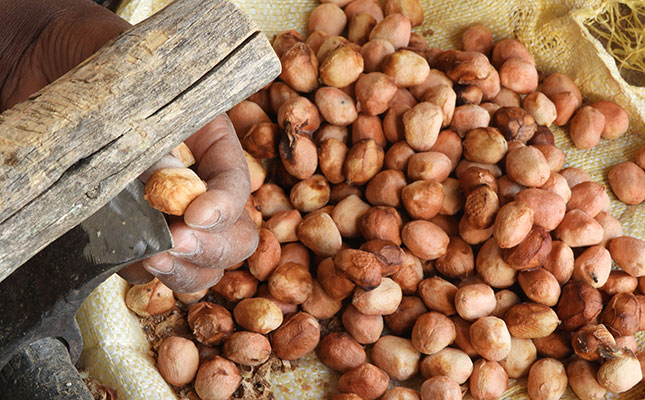
Processing the fruit is a labour-intensive undertaking. Once it has been harvested, the pulp is separated from the pits by hand. The pulp is then cooked until mushy, pressed through a sieve to remove any remaining impurities, and boiled with sugar to make jam or juice.
The pits are dried in the sun, cracked by hand, and the two or three little kernels inside are removed. These can be eaten raw or roasted with salt as a snack, and make a good addition to salad.
Marula oil
Oil from the kernels is also used in the lodges’ kitchens for cooking and in salad dressings. A wooden pounder is used on the kernels to extract the oil. The pounder is a traditional tool used in northern Namibia for grinding millet and maize.
“To ease the work process, we’re considering investing in a mechanical oil press. Our first oil yield was only 10ℓ, and we think this will increase if we use more kernels and a mechanical press.
Rust adds that if they used a mechanical press, the extraction process would not be as messy. A machine that automatically cracks the pits would also be a great improvement.
“Marula oil is an excellent alternative to sunflower oil, which is also becoming increasingly expensive. It offers guests of Ghaub and Waterberg Wilderness a special taste experience,” he says.
The future
Rust plans to build on the opportunity offered by their tourism arm to sell marula-based farm products.
“At this stage, we don’t have enough volume to sell to the open market; we only use the produce to provide a special experience to guests in our lodges. However, we know that we can expand. We plan to slowly grow our marula-processing facilities and hopefully, in the future, establish a central processing plant where local communities can deliver their marula harvests in order to earn a small income,” he says.
Visit ghaub-namibia.com or one-namibia.com.









